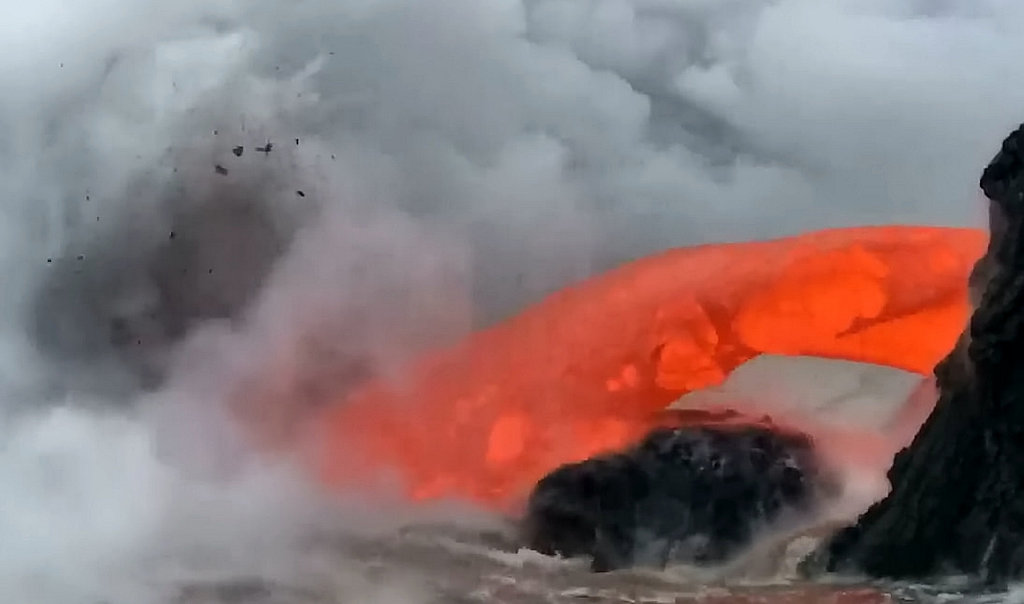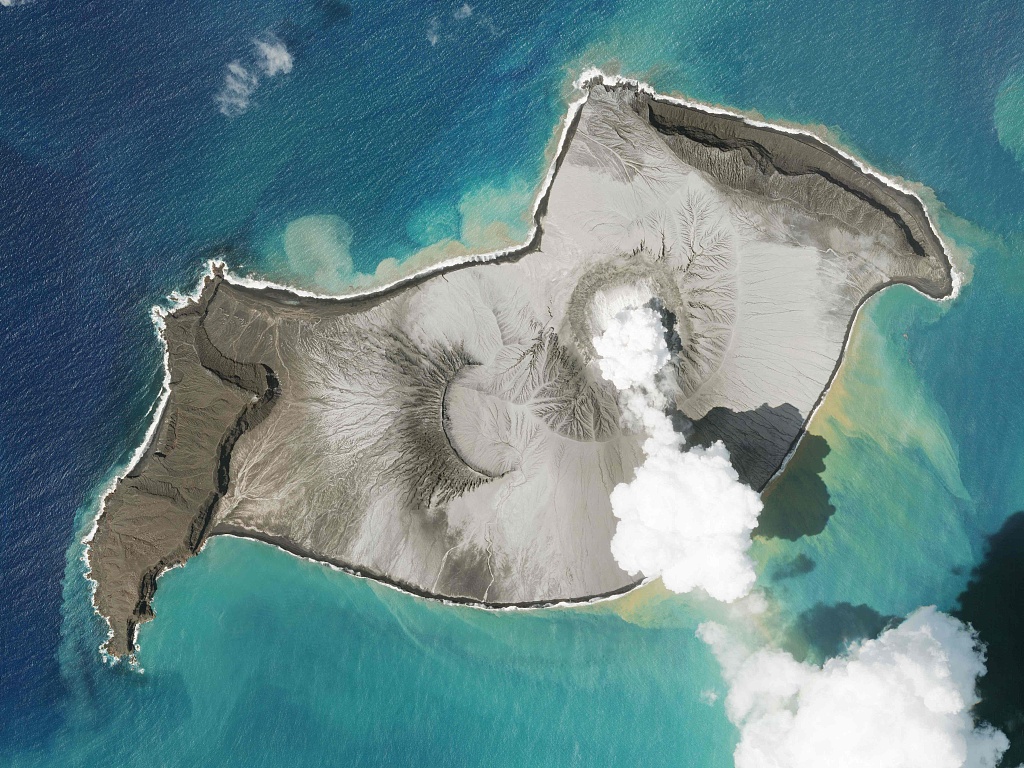Beneath the surface of the Aegean Sea, a few miles from Santorini in Greek, a new magma chamber in the submarine volcano Kolumbo is thought to be capable of erupting, although not in the immediate future, according to a recent paper published in the journal Geochemistry, Geophysics, Geosystems by a team of scientists led by Kajetan Chrapkiewicz from the Department of Earth Sciences at Imperial College London.
Kolumbo lies about eight kilometers northeast of Santorini. Its crater is presently about half a kilometer beneath the surface of the sea, which it last broke through when erupting in 1649-1650. That eruption almost 400 years ago apparently lasted for months. The lava built up a cone that rose above the Aegean Sea waves.

Tonnes of molten lava spew from a collapsed volcano into the sea at the Kamokuna lava delta in Hawaiion December 31, 2017. /CFP
Tonnes of molten lava spew from a collapsed volcano into the sea at the Kamokuna lava delta in Hawaiion December 31, 2017. /CFP
In fact, underwater volcanoes are not rare. Approximately three-quarters of all volcanic activity on Earth occurs as deep, underwater eruptions.
However, it's uncommon for submarine volcanoes to have explosive eruptions. If the eruption happens at very great depths underwater, the lava will come into contact with cold seawater and cool very quickly. The water will get very hot, but it won't turn into steam. But if the water is shallow enough, the lava starts to heat the water, and a large volume of steam will be seen on the surface of the water, often accompanied by a violent explosion. Meanwhile, when lava comes in contact with water, the temperature change is so dramatic that the lava instantly solidifies into rock.

View of the eruption on the Hunga Tonga-Hunga Haʻapai volcano on January 17, 2022. /CFP
View of the eruption on the Hunga Tonga-Hunga Haʻapai volcano on January 17, 2022. /CFP
In addition, violent volcanic eruptions also represent impulsive disturbances, which can displace a great volume of water and generate extremely destructive tsunami waves in the immediate source area. And the large amount of volcanic ash, which is the mixture of rock, mineral, and glass particles expelled from a volcano, enters the sky, which will soon block the sun and plunge the vicinity into darkness.
On January 1 last year, the explosive eruption of the Hunga-Tonga-Hunga-Ha' apai submarine volcano triggered tsunami waves of up to 15 meters high which struck the west coast of Tongatapu, 'Eua and Ha' apai. According to the United Nations Office for the Coordination of Humanitarian Affairs, the ashfall covered an area of at least five square kilometers.
(If you want to contribute and have specific expertise, please contact us at nature@cgtn.com.)